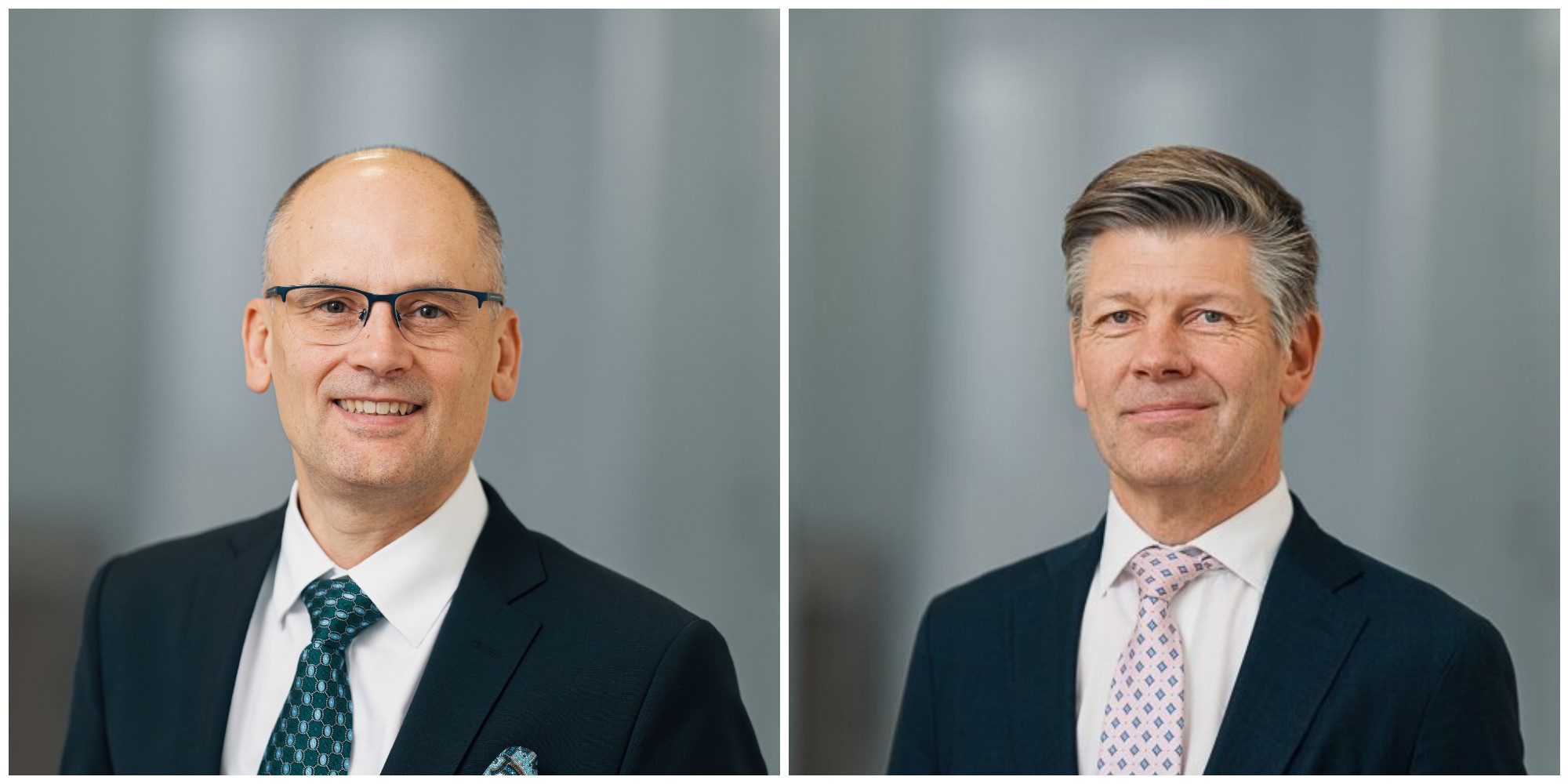Tällä videolla Morningstarin Yhdysvaltain pääomavirtoja seuraava analyytikko Michael Rawson purkaa auki tapahtumat Yhdysvaltojen rahastomarkkinoilla tänä vuonna. Haastattelijana on Morningstarin Christine Benz.
Christine Benz: Hi, I'm Christine Benz for Morningstar.com.
Asset flows into long-term mutual funds are on pace to be the strongest they've been since 2009. Joining me to discuss the latest fund flow data is Michael Rawson. He's a fund analyst with Morningstar.
Mike, thank you so much for being here.
Michael Rawson: Pleasure to be here.
Benz: Mike, coming into this year, there was a lot of talk about how we were going to see this great rotation into equity mutual funds. How has that played out through the year's first 11 months?
Rawson: Looking back, I think you'd have to characterize it as a great rotation. There have been tremendous flows into equity funds. It's kind of crept up, and it has just been consistent, particularly international funds. International funds are having the strongest year ever in terms of equity flows. U.S. equity funds are having their strongest year since 2000.
What's driving the strong flows into U.S. equity funds are the continued strong flows to passive--which we've noted and we've talked about many times--but also the outflows from active have moderated. In the past, there's been this dichotomy where you've had strong flows into passive, outflows into active, and they've offset each other. This year, the outflows from active have really moderated, and active U.S. equity funds are having their strongest year since 2006.
So when you combine them all, in addition to sector funds, you are seeing really strong flows into equities, and we have the outflows from most core taxable bond funds. So, there has been this sort of great rotation.
Now, these records are on a nominal basis. We talk about the aggregate fund flows. Relative to assets, the magnitudes of the flows are somewhat smaller, just because the mutual fund and ETF industry has gotten so much bigger--assets are at record levels. On a relative basis, they're not at record levels. Maybe on a relative basis, you'd characterize it as a "good" rotation …
Benz: Not great yet.
Rawson: Not great. But certainly there has been a rotation into equity funds and out of core taxable bond funds.
Benz: When you look at the categories within U.S. equity that are getting the flows, where do they tend to crop up?
Rawson: It still tends to be value. Small cap is doing well. Small cap has had great performance this year. Some small-cap funds are up over 30%--just phenomenal returns. There still tends to be outflows on the growth side, particularly large growth has had outflows. Funds that come to mind are American Funds Growth Fund of America, which has had outflows continue.
However, the value side continues to do well, and I think part of that is the appeal of dividend funds. Dividend funds have been popular with the low interest rate [environment]. They've still been pretty popular. So, the value side still has strong growth, and a lot of that is coming from fixed-income investors who are disappointed with the yields shifting into equities, looking for dividend yield.
Benz: We've talked before that that makes us a little bit worried that sometimes investors are thinking they are going to get this dividend, but they also could get a lot more volatility than they'd have with bonds.
Rawson: Absolutely.
Benz: Let's look at international. I think that's a really interesting story, and generally speaking, international equity funds have underperformed U.S. funds, but we continue to see those big flows there. Where are investors sending their dollars internationally?
Rawson: It's a little bit of a surprise. We always have strong flows into diversified emerging markets, at least historically. This year not so much. It's the developed markets that are really attracting the flows and the growth, and that's coming from two sources: Europe and Japan.
The European economy has stabilized, and we all know the story going on in Japan that the yen has fallen and the stock market has really taken off this year. Both of those developed markets are attracting really strong flows. Category funds in those categories are doing well.
Also foreign large blend--just general global funds--are attracting a lot of flows. And even though those international markets maybe aren't doing as well as the U.S. market, they're still doing pretty well. The average fund in the Europe-stock category is up about 22% this year. So it may not be as good as the U.S., but that's decent performance that I would take.
Benz: I know another story that you've been monitoring. You touched on this briefly. We've seen assets coming out of high-quality intermediate-term bond funds going into some of these other categories. Do you see that trend persisting as we're winding up the year?
Rawson: I do. Initially I was surprised that it persisted for so long, but I think there's some momentum to flows. I think it's maybe a delayed reaction on behalf of investors; they see the underperformance and then the outflows continue over several quarters. I think it may continue.
It is surprising. The magnitude of outflows we have from certain funds, such as PIMCO Total Return--just really massive outflows there. But I think you may continue to see outflows from intermediate-term core bond funds and inflows into what I would characterize as non-core bond funds, which would include things like bank loan and non-traditional bond, which have had very strong flows, but also high-yield and emerging-markets funds are getting strong flows.
They had outflows in June when the interest rate shock happened initially, and I think some people were worried that the interest rate increase would hurt all bond funds--any kind of interest rate risk. But since then, high yield has actually had inflows. I think people are thinking, if the Fed does increase rates, it will probably be because the economy is improving, and in that scenario, credit spreads may tighten, so I would still feel comfortable with a high-yield bond.
But bank loan and non-traditional bond are the two categories attracting the most flows. In fact, up until just recently, it was PIMCO Unconstrained Bond that had been attracting very strong flows. Recently that fund has fallen off, and there's a Goldman Sachs Strategic Income Fund, which is in the non-traditional category, which has had very strong flows.
Benz: Let's talk about alternatives. We haven't really talked about them much, but what you notice is that at least for the year to-date, the flows into alternatives have been pretty decent. That's a broad basket. What types of products are investors gravitating to there?
Rawson: It is a broad basket. [With] $45 billion combined ETF and mutual fund flows year-to-date, that's the strongest flows they've ever had.
This category really took off after the financial crisis. People saw that these funds provided some downside protection when people needed it the most, and so they've still gravitated to that area despite the fact that the equity market has rebounded.
In that category, long/short funds have done really well in terms of attracting flows. The main fund I'm talking about is MainStay Marketfield Fund, which has had $12 billion of inflows this year--really phenomenal flows. But there are also some other long/short funds, which have attracted assets as well, such as AQR Managed Futures Strategy Fund has attracted assets.
Benz: In terms of fund families that have seen the biggest asset growth, and those that have seen the biggest outflows, let's talk about the leaders and laggards from that standpoint?
Rawson: The leader perennially is Vanguard. Vanguard has got about $65 billion in mutual fund flows so far this year. The next closest fund company is DFA, at $20 billion. The gap between Vanguard and everybody else is very wide. Of course, last year PIMCO was up there in number two, but this year PIMCO has had outflows.
I think it's interesting how well DFA has done. We think of DFA as being a small value shop, but they have really done well with their international funds, and their bond market funds have had very strong growth. You combine that with their flows into equity products, and they've had a very strong stable across the board, which has allowed them to have strong flows overall at the firm level.
Benz: Vanguard has captured a really astounding percentage of new flows into domestic equity funds. Let's talk about that?
Rawson: For mutual funds, they've captured some 98% of the flows. Obviously, some funds have outflows; some funds have inflows. Vanguard overall is doing very well, both on the passive side and the active side. They were able to actually have inflows in the active equity side; whereas many funds have outflows. So they're really hitting on all cylinders.
Benz: Mike, thank you so much for being here.
Rawson: Thanks for having me.
Benz: Thanks for watching. I'm Christine Benz for Morningstar.com.





















